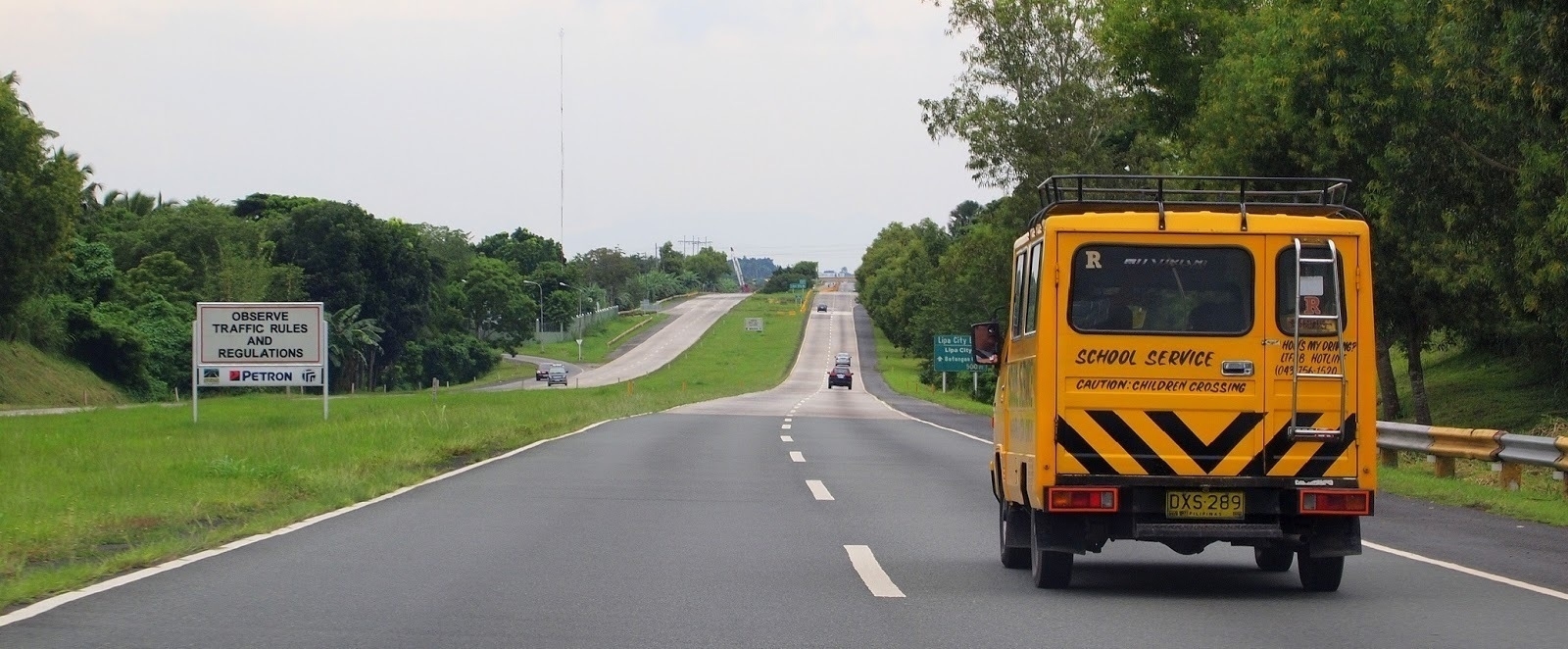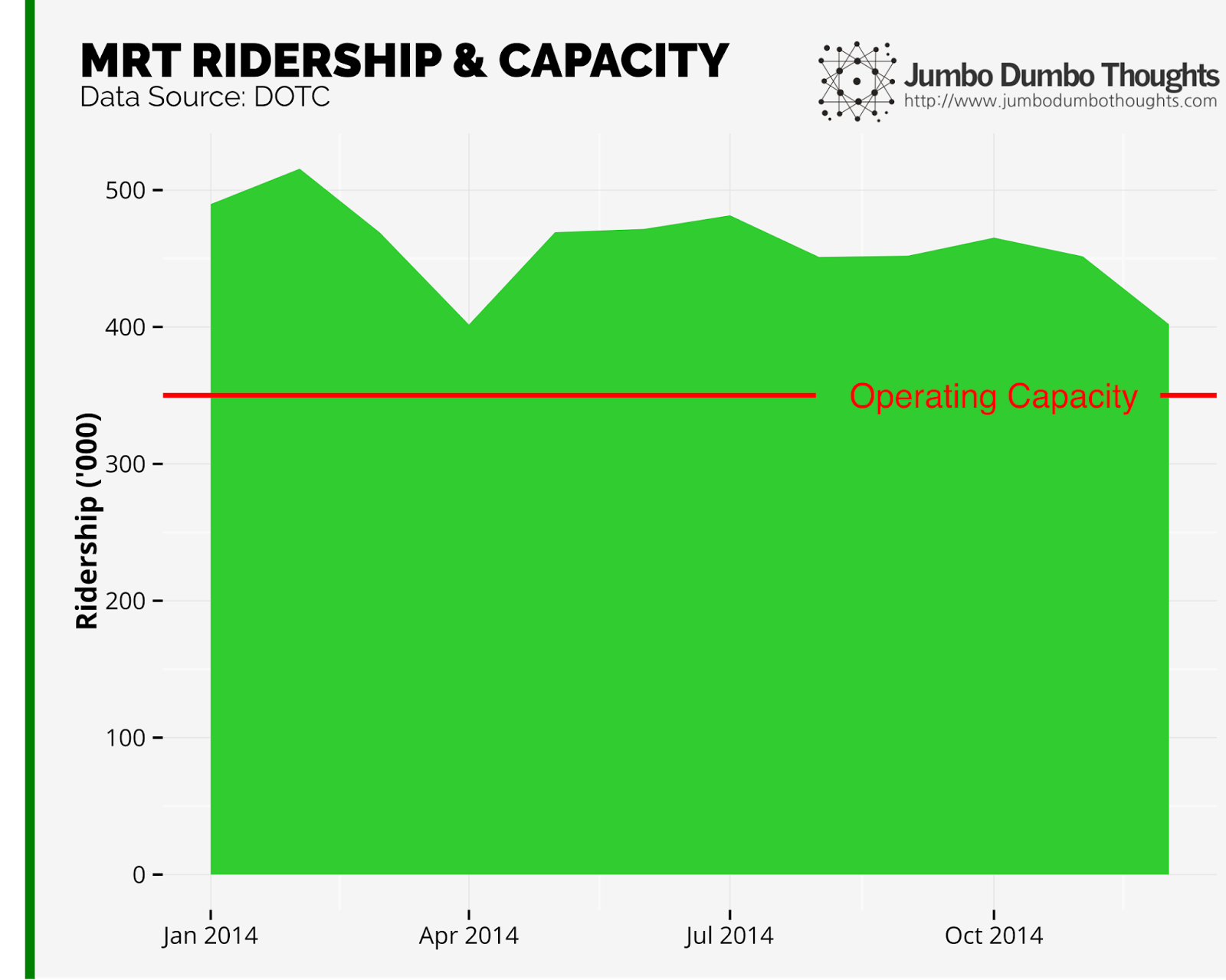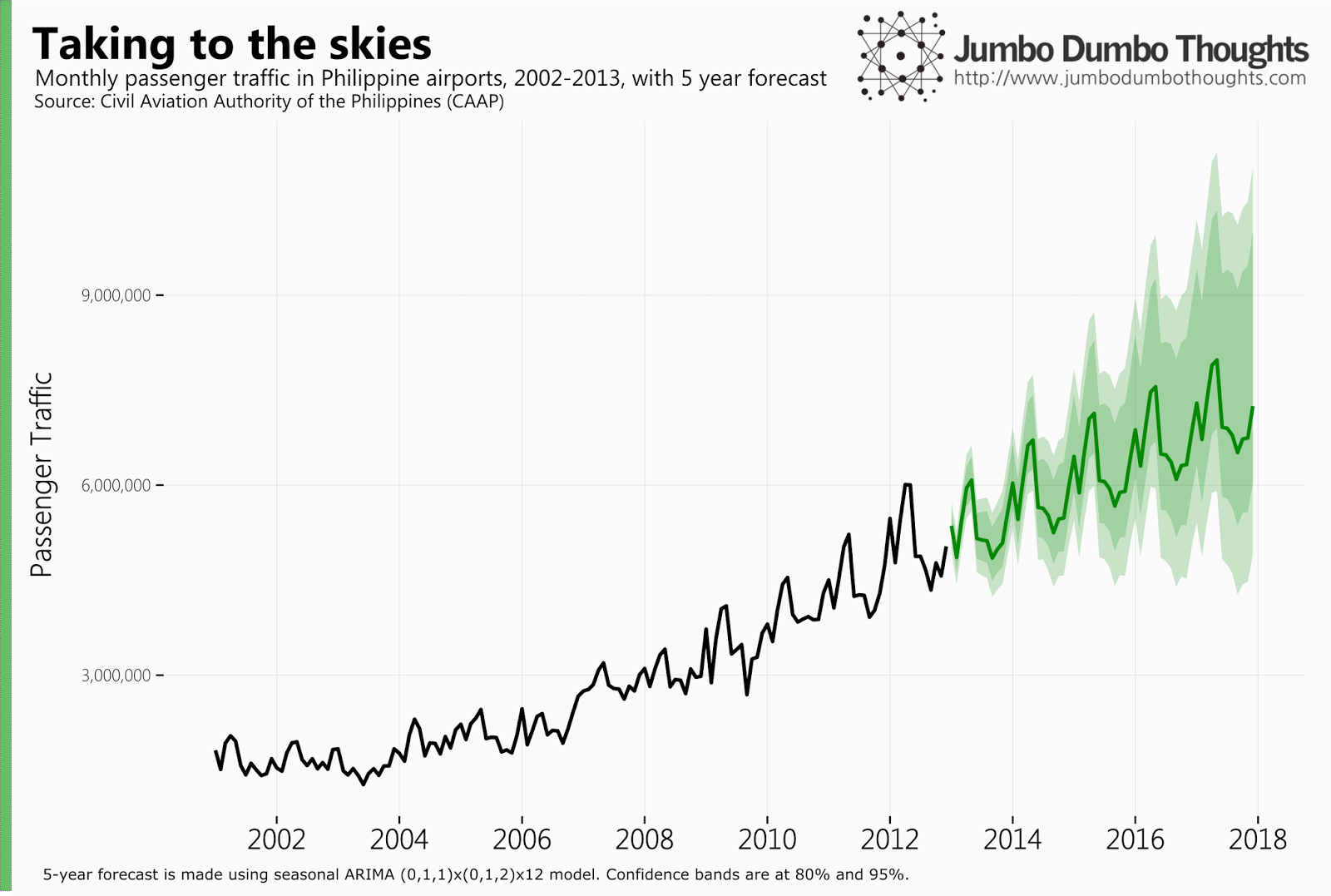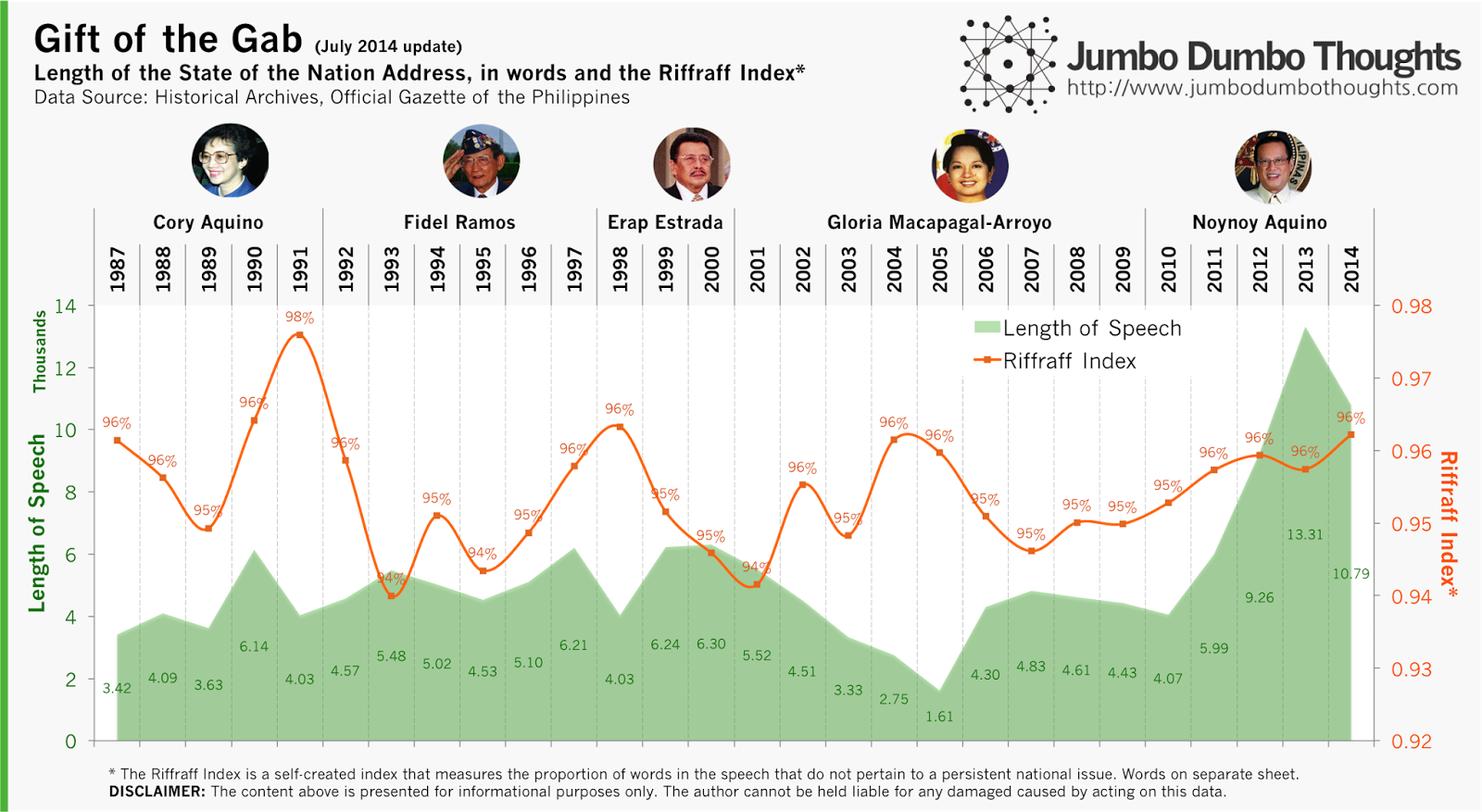Philippines
On Schools and Survival: A look at dropout rates in the Philippines (EduData Part 1)

In what grade level are students most likely to drop out? Are females or males more likely to stay in school? We’ll explore delays and dropouts in the Philippine education system with data from the Department of Education in this first installment of the EduData series.
On the MRT: A Capacity Conundrum
This article was also featured on Rappler and GMA News Online!
After more than 16 years in operation, it is clear that the MRT isn’t anymore what it once was. What used to be an enduring symbol of progress and technological innovation is now just an uncomfortable, accident-prone, and unfortunately, inevitable mode of transport. Operating at the level of about 500,000 passengers per day on a capacity of only 350,000, transport secretary Abaya says the trains continue to be worn down from the excessive burden.
Too close for comfort

MRT Ridership - Continuously operating at above capacity is sure to bring undue wear and tear to a system that hasn’t seen any major overhaul since it was built.
I’ve written before on the state of train lines in the capital, but new data from the Department of Transportation and Communications (DOTC) has surfaced, allowing us a more detailed look at the inner workings of the historic MRT.
On Airline Agitation: Flight networks and what Facebook comments say about customer satisfaction

In recent years, the Philippine aviation industry has experienced rapid growth, with more and more Filipinos getting to experience air travel for the first time. Not only that - the industry is in flux - fierce competition has caused churn and consolidation among the key players. We can take a closer look by analyzing their current flight networks, as well as performing sentiment analysis on comments on the airlines' official Facebook pages.
On the Effectiveness of Higher Sin Taxes (2014 Q2 Update): Losing Steam?
We update our assessment on the effectiveness of sin taxes with fresh national accounts data for the second quarter of 2014, and learn that sin taxes may be losing steam - smokers and drinkers may be having a hard time kicking the habit.

How are higher sin taxes faring a year and a half after their implementation? (Photo: Fried Dough/Flickr, CC BY 2.0, cropped)
When we first covered the new sin taxes in 2013, we focused on its effect on household consumption of alcohol and cigarettes, and subsequently updated it to reflect the 2013Q3 stats. Now that sin taxes have been in effect for roughly a year and a half and has even kicked it up a notch, let’s review national accounts data from the Philippine Statistics Authority (then NSCB), to see how it has fared.
On Presidential Priorities (July 2014): Aquino moves toward legacy

Aquino’s 5th SONA word counts suggest a shift of focus from current national issues toward long-term legacies such as education, budget management, and poverty alleviation. However, the overall message echoed by the administration remains the same. (Photo: Official Gazette, public domain)
I previously wrote a post that tries to get a feel of the priorities of each administration at various points in time, by measuring how many times each speech mentions certain words that relate to national issues. Following the recent 2014 SONA of President Aquino, we update the data to see what’s changed, and whether there are any shifts in the priorities of his administration.
Please feel free to read the [[On Presidents and Priorities|original post]] to view how this data was collected, shaped, and presented.
The Basics: Length of speech and the Riffraff index
Let’s take a look at the overall length, and how much of the speech actually contained meaningful content, as measured by the Riffraff Index.

President Aquino’s 5th SONA is shorter than last year’s, but still quite long at around ten thousand words, making it the second longest SONA since his mother’s time. Despite this cutting down of length, the amount of riffraff increased, probably due to his lengthy discussion of various calamities and also the legacy statement near the end of the speech.
Presidential Priorities 2014: Education, government finance, and poverty
Let’s use the same criteria to determine the trends in the priorities of various administrations. Will it have changed for President Aquino? Let’s find out:

The President focused more on education (TESDA), poverty (poverty rate and conditional cash transfers), and government finance (debt management, investment rating upgrade) compared to previous speeches. There was less focus on environment and law and order compared to previous speeches. As the term ends, the administration might be focusing more on long-term legacies such as education and balancing government books rather than current issues such as corruption, law and order, economy, and employment.
Priority Heatmap: No change in overall priorities
How does the new data affect the overall priorities of the Aquino administration? The answer is: not much.

Overall, compared to other administrations, the Aquino administration is still very much focused on both graft, corruption, justice and workers, jobs, wages, with a slight shift towards education.
Interactive Word Counter
You don’t have to take my word for it; the word count data is available for you to explore and draw insights from. Just input the words you’d like to count in the five white boxes (use space to clear out a cell), and see it reflected in the graph.
Unfortunately, this link has expired and I don’t have time to recover it.
Hope you enjoy discovering new trends with the tool! If you find an interesting pattern, please don’t hesitate to share it in the comments!
Thanks for reading! If you enjoyed reading, I’d appreciate it if you shared this with your friends or comment below. Data and computation inquiries can be made through the contact form or the comments.
aliases: - 2014/08/sona-words-july-2014.html - content/blog/2014-08-13-sona-words-july-2014/sona-words-july-2014.html - posts/2014-08-13-sona-words-july-2014 - articles/sona-words-july-2014
On Pork and Plunder: The numbers behind the Priority Development Assistance Fund (PDAF) scam

For the first time in Philippine history, three Senators have been arrested without bail on charges of plunder. In this photo are the three Senators in question after Sen. Revilla delivered his privilege speech last June 2014.(Photo: Alex Nuevaespaña/Senate PRIB)
On charges of plunder related to the PDAF or pork barrel scam, three senators - Enrile, Estrada, and Revilla - were arrested in separate occasions during the past week, joining the alleged pork barrel mastermind Janet Lim-Napoles in incarceration. The trial will surely play out in a methodical, if not slow, pace, and many Filipinos will be in want of the case’s speedy resolution. What we can do right now, is to take PDAF releases data from the Department of Budget and Management and use it to take a look at the numbers behind the PDAF scam - how much did they release, to whom, and for what? These are questions we can answer with the data.
On the Overweight and Obese: 1 in 4 Filipino adults are overweight, 1 in 20 are obese
From roughly 16%, 25% of the Filipino population is now overweight. (Photo: Thomas Kohler/Flickr, CC BY-SA 2.0)
A report by the Institute for Health Metrics and Evaluation reveals that obesity for both children and adults is on the rise in the Philippines. While girls are less prone to obesity than boys early on, this trend reverses as they become adults. However, both sexes are still losers in the battle of the bulge, as obesity rates increase as they age.
Filipinos love to eat, and the latest report from the Institute for Health Metrics and Evaluation (IHME) show that it might be negatively impacting obesity and overweight rates.
First, let’s take a look at obesity and overweight rates for both children and adults over time:
From 16% (1 in 6) in 1980, Roughly 25% (1 in 4) Filipino adults are overweight. The obesity rate has also increased from 3% to 5% in the past 30 years. For children, the overweight rate has nearly doubled from 2.7% (1 in 40) to 5.5% (1 in 20). Obesity rates have also been on the rise.
Next, let’s divide up the population by gender to see the differences between males and females:
There is a peculiar trend going on between the sexes. Overweight and obesity rates for female adults are higher than for male adults, but the opposite is true for children. Is this the effect of pregnancy in adulthood?
Lastly, we cut the population into age groups, and see how that’s evolved over time:
Obesity and overweight rates peak in around your 50’s, and are lowest in the late teens. Funnily enough, this seems to correlate with income over a person’s lifetime. The wallet grows and shrinks with the belly, doesn’t it?
There you go: a quick data primer on Filipino obesity and overweight rates. I think I’ll have to take a rain check on that buffet dinner.
Thanks for reading! If you found this post interesting, I’d appreciate it if you shared it on your social networks, or shared your thoughts in the comments. Data can be gathered from the IHME website.